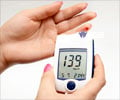Malarial drug, artemisinins replaces the destroyed beta-cells in the bodies of patients with newly-produced insulin-secreting cells.

- The beta cells of the pancreas are responsible for the production of the hormone insulin, that reduces the blood glucose levels.
- The FDA approved artemisinins, have been popularly used to treat malaria.
- Artemisinins transform glucagon-producing alpha cells in the pancreas into insulin producing beta cells.
Type 1 diabetes was previously referred to as juvenile diabetes because of its occurrence in children and young adults mostly below twenty years of age.
The prevalence of type 1 diabetes increased from 1.48 to 2.32 per 1000 in the pediatric population during 2002-2013.
Type 1 diabetes (T1D) is also known as insulin-dependent diabetes because the body fails to produce insulin, which is required for the conversion of glucose into energy required by cells to function.
This results in the build-up of glucose in the blood stream, which in turn raises the level of sugar, thereby causing diabetes.
The islets house three major types of cells - Alpha, Beta and Delta cells. The Beta cells occupy the central portion surrounded by Alpha and Delta cells and are responsible for the production of the hormone insulin.
Artemisinins
Earlier research described the molecular mechanisms involved in the development of beta cells, however, a compound capable of doing the trick was missing.
The research team coordinated by Stefan Kubicek, Group Leader at CeMM, showed that artemisinins hit the bulls eye.
Artemisinins are has been used to treat malaria.
Researchers tested many approved drugs on cultured alpha cells using specially designed, fully automated assay, and found the malaria drug to do the required job.
"With our study, we could show that artemisinins change the epigenetic program of glucagon-producing alpha cells and induce profound alterations of their biochemical function", Stefan Kubicek explains.
Previous studies showed that alpha cells can replenish insulin producing beta cells in case of an extreme loss of beta cell loss.
The key epigenetic regulator of the transformation was identified as the molecule Arx.
"Arx regulates many genes that are crucial for the functionality of an alpha cell," says Stefan Kubicek. "Preceding work of our collaborator, Patrick Collombat's team showed that a genetic knock out of Arx leads to a transformation of alpha cells into beta cells."
To exclude the role of surrounding cells or even distant organs, Kubicek's team together with the group of Jacob HecksherSorensen at Novo Nordisk designed special alpha and beta cell lines to analyze.
They proved that loss of Arx is sufficient to confer alpha cell identity and it does not depend on the influence of the surrdounding cells or organs.
Using these cell lines, the researchers were able to prove that artemisinins were found to have the same effect as an Arx loss.
Mode of Action of Artemisinins
The researchers then demonstrated the molecular mode of action by which artemisinins reshape alpha cells.
Artemisinins binds to a protein called gephyrin, that activates GABA receptors which are central switches of the cellular signaling.
This leads to change of countless biochemical reactions and eventually the production of insulin.
Another study by Patrick Collombat, shows that in mouse models injections of GABA also lead to the transformation of alpha into beta cells, suggesting that both substances target the same mechanism.
Confirming in Other Animal Models
In diabetic model organisms like zebrafish, mice and rats, researchers observed an increased beta cell mass and improved blood sugar homeostasis upon artemisinin delivery.
"Obviously, the long term effect of artemisinins needs to be tested," says Stefan Kubicek. "Especially the regenerative capacity of human alpha cells is yet unknown. Furthermore, the new beta cells must be protected from the immune system. But we are confident that the discovery of artemisinins and their mode of action can form the foundation for a completely new therapy of type 1 diabetes."
The research findings are published in Cell .
References
- Type 1 Diabetes - (https://www.medindia.net/patients/patientinfo/type-1-diabetes.htm)
- Stefan Kubicek et al. Artemisinins Target GABAA Receptor Signaling and Impair Alpha Cell Identity. Cell; (2016) DOI:10.1016/j.cell.2016.11.010
Source-Medindia















